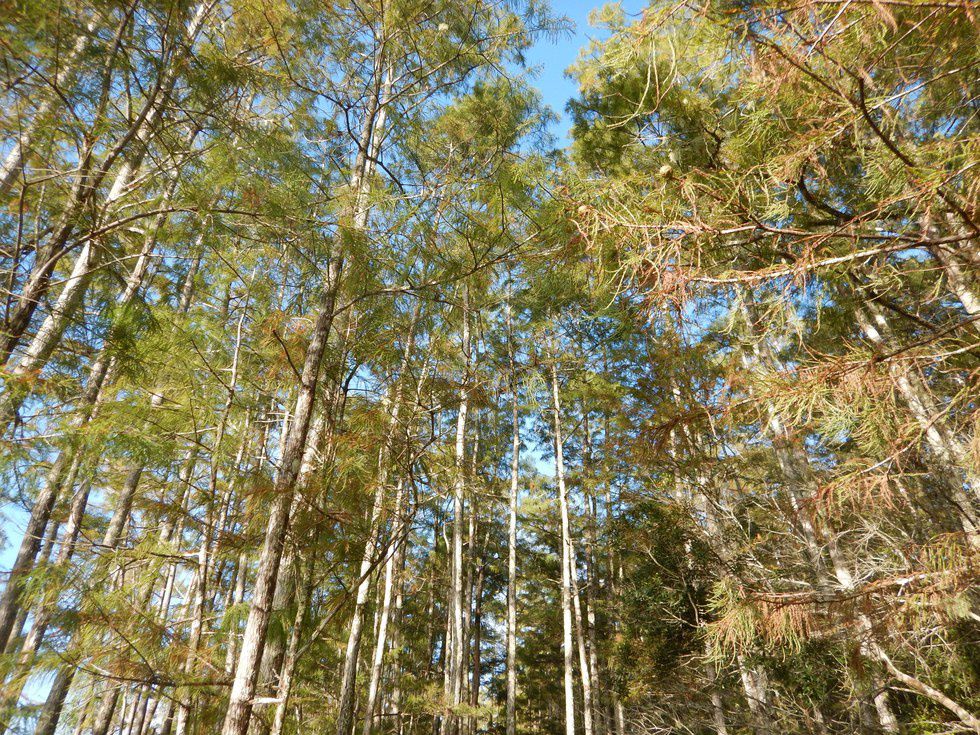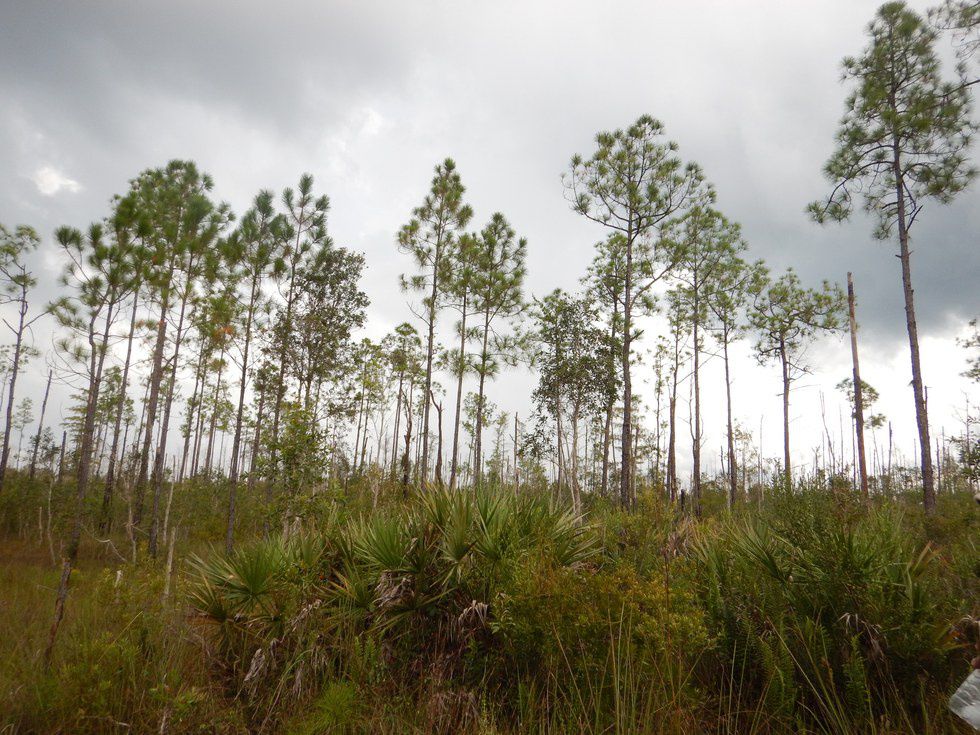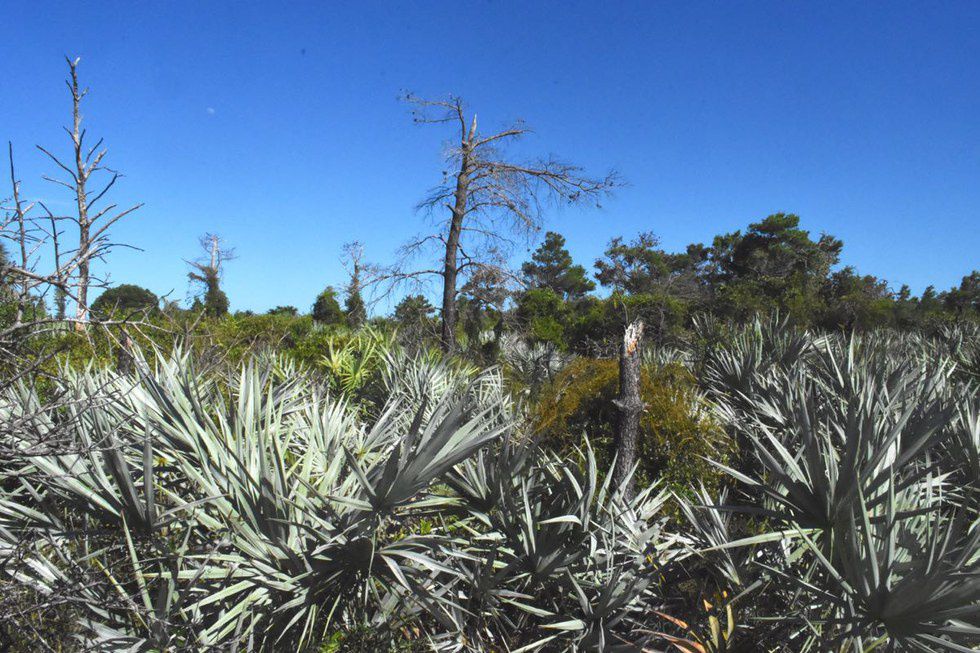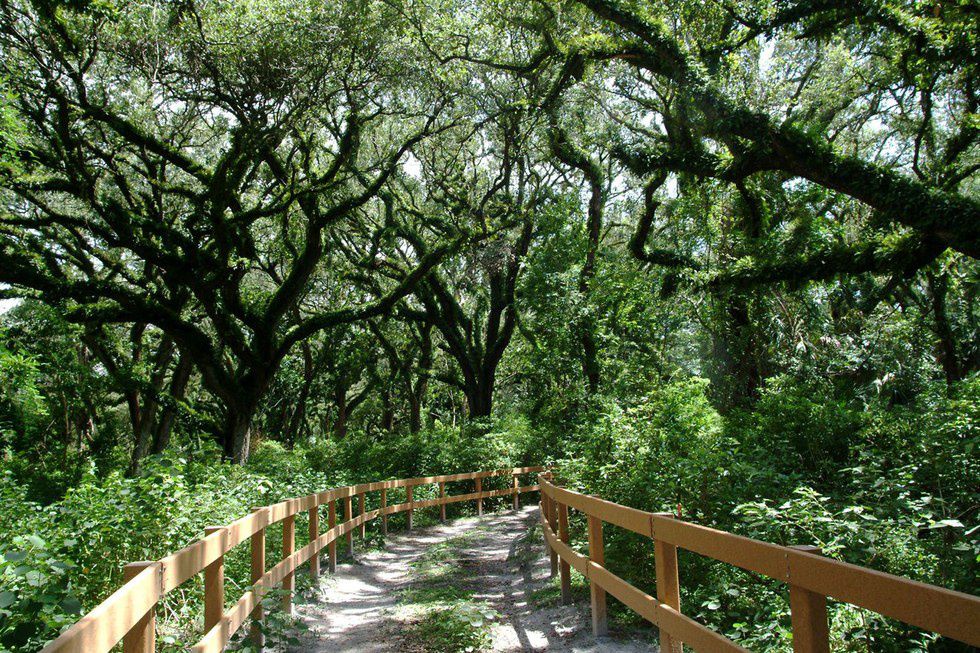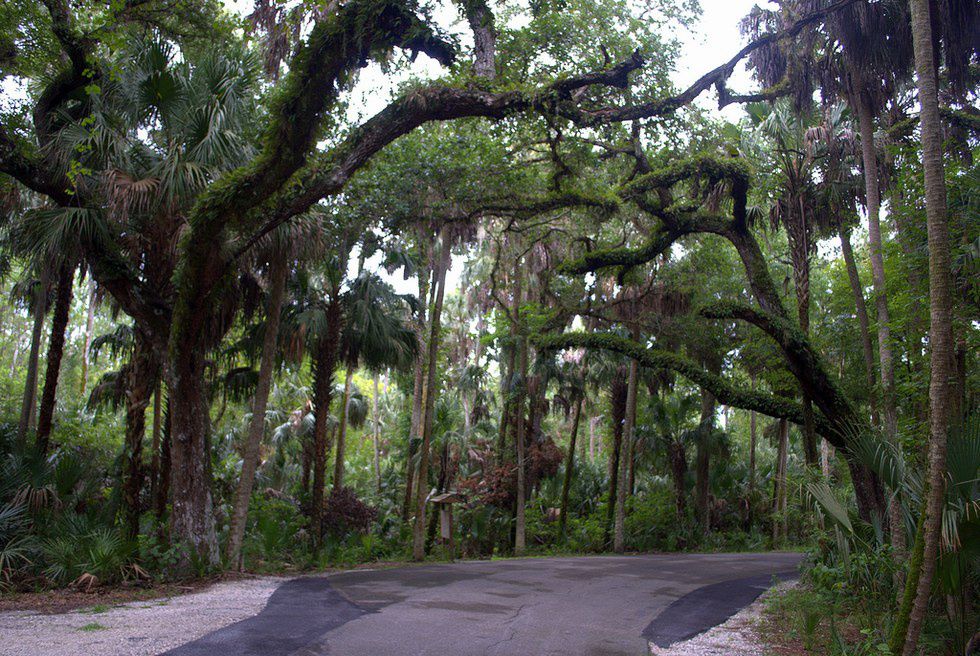Most of Florida’s residents, (along with many tourists that flock to Florida every year), know about the infamous River of Grass—the Everglades. When people think of the Florida’s Everglades, the picture of swamp buggies, endless miles of sawgrass inundated in water, and alligators hiding out in the wetlands come to mind. While the Everglades does indeed cover a large area of Florida and is vital to a biodiverse ecosystem and a large part of Florida’s tourist industry, it is not the only important type of ecosystem that exists in the state. Another type of ecosystem that is much rarer and is often overlooked is called the uplands—habitats where plants are not able to survive in flooded soils and anaerobic soils. These uplands consist of a variety of different habitats such as pinelands, hardwood hammocks, and scrub habitats and can be found a lot closer to home than many people realize.
Pinelands
What they are: Pinelands can occur all throughout Florida and are mostly quite flat (surprise surprise). The little elevation that pinelands encounter can actually change the type of pineland habitat. For example, pine flatwoods (dominated by either Longleaf pine or Slash pine) are typically at lower elevations and are just slightly higher than a wetland would be. High pine habitats are at higher elevations and have better-drained soils as a result. Scrubby flatwoods are that in-between habitat and have characteristics of both pine flatwoods and high pine habitats. A rare type of pineland habitat is pine rockland where limestone outcroppings are present. Fires keep these ecosystems in check and make sure that larger trees, such as oaks, do not overtake the habitats and outcompete the pine trees.
Where you can find them: In Florida, pine flatwoods can be found at a few natural areas, parks, and preserves. One of these areas includes the Corkscrew Swamp Sanctuary in Naples which has a boardwalk that takes you through absolutely beautiful pine flatwoods (as well as wet prairie and an ancient Bald Cypress forest, too). The major pine rockland habitats in Florida are Miami rock ridge and the lower Keys (mostly Big Pine Key). Hardwood Hammocks State Park is also like Corkscrew, as it features pine flatwoods and Bald Cypress forests, and it has a boardwalk that allows you to experience it from within the habitat.
Corkscrew Swamp Sanctuary
Scrub Habitats
What they are: I am sure when most people think of Florida, the Everglades comes to mind as a seriously old and endangered ecosystem. Don’t get me wrong, it is definitely in need of some restoration, (which it is getting, thankfully), but it is actually only a few thousand years old. Scrub habitats on the other hand are the oldest ecosystem in Florida and the ecosystem that is in the most threatened by us humans. Scrubby habitats are mostly found in north and central Florida and are basically a mix of flatwoods and scrub. They are dominated by sandy soils and have mostly shrubs and small oaks. Scrub habitat is pretty important because just about half of the species that are found in these habitats are endemic species. Basically, that means those species can only be found in scrub habitats. Pretty cool, huh?
There are four types of specific scrub habitats: sand pine scrub, rosemary scrub, coastal scrub, and oak scrub. Sand pine scrub consists of ancient dune systems (hence the sandy soils) and they have a thick canopy of pine trees. Rosemary scrub contains more open areas of sand and low-lying shrubs. Coastal scrub is (you guessed it) closer to the beach and acts as a transition zone as you move further from the beach. Oak scrub
Where you can find them: In Broward County, a scrub upland habitat that you can visit is Highland Scrub Natural Area in Pompano Beach. It is a paved walkway through the scrub habitat where you can see a variety of different scrub plants and animals that live there. There is also an off-trail area that you can go to and see some gopher tortoise burrows. However, you must be careful! There are sand spurs and if you step on them, they are pretty much at the same pain level as stepping on legos.
Highland Scrub Natural Area
Hardwood Forests
What they are: Also known as hammocks (not the kind you relax in, unfortunately), hardwood forests are basically forests that have hardwood trees rather than pine trees. This type of upland can call the whole state home, although environmental factors such as hydrology and climate influence the exact types of species that are in these forests. Like scrub habitats, hardwood forests can be divided into three main types: southern hardwood forest, temperate broad-leaved evergreen forest, and tropical rainforest.
Fun fact about southern hardwood forests—they have the most number of species of shrubs and trees per unit area than the rest of the U.S. Another fun fact—because of this (and a few other traits) southern hardwood forests are thought of as having a similar environment to the forests in the last ice age. Who knew that Florida could actually be compared to something cold? Moving on, the temperate broad-leaved evergreen forests mostly have broad-leaved evergreen trees like live oak and cabbage palm. Makes sense. Also, these forests can be severely damaged by fires and floods (unlike pine habitats) and can be disturbed by us lovely humans when we develop the land. Lastly, we have tropical hardwood hammocks. Only a few blotches of this habitat remains and most are in the Keys. They are known to have a higher diversity of species than other forests and also have thick shrubs and vines that act as a second canopy and protect the animals that live in these forests.
Where you can find them: Long Key Natural Area in Davie is a good example of a hardwood forest. It is mainly an oak forest that has a nice little walkway where you can see the most common of Florida’s oaks, vines, and other shrubs and bushes. Highlands Hammock State Park is also a great place to see hardwood hammocks through its boardwalks and trails.
Long Key Natural Area
Highlands Hammock State Park




